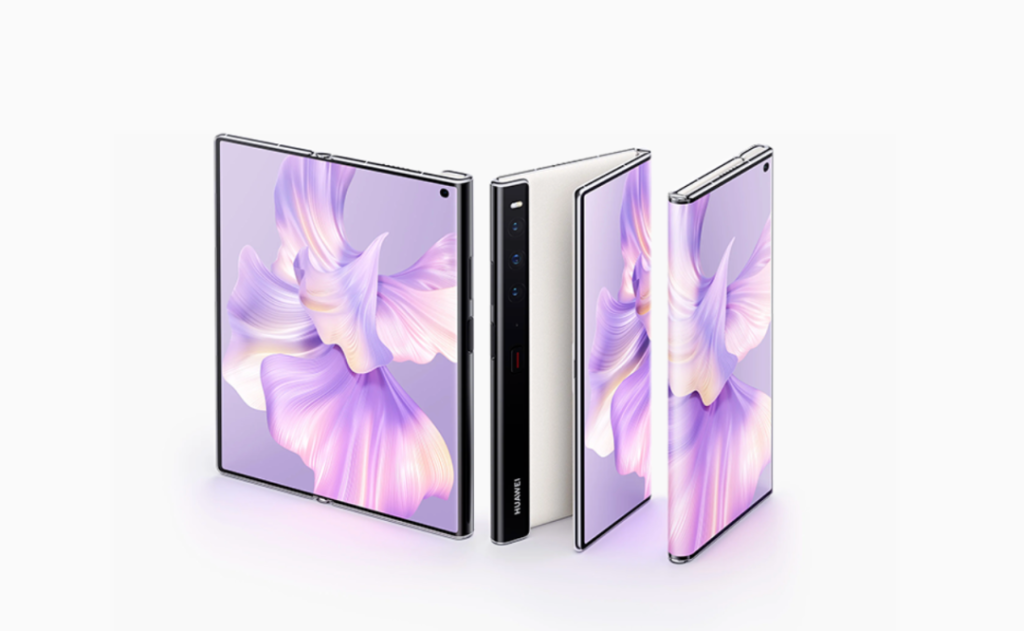Golden CPI Film” – The Core Material Behind Foldable Smartphones

The future of smartphones is on the brink of a revolutionary shift with the rise of foldable phones and the debut of 5G technology. At the heart of foldable smartphones lies a key innovation: flexibility. But what enables these phones to fold seamlessly?
Traditional hard screens can’t bend, so manufacturers are turning to advanced materials to soften the substrate, allowing screens to fold without breaking. Let’s explore the materials and breakthroughs behind this next-generation technology.
Challenges in Substrate Materials
Foldable screens need a substrate that offers both rigidity and flexibility—strong enough to withstand bending yet resilient enough to return to its original shape without damage after frequent folding. In addition to being flexible, cover materials must also offer:
- High transparency for display clarity
- Durability to resist scratches
- Resistance to impact
Glass, the standard material in most screens, is rigid and prone to cracking, making it unsuitable for foldable screens. Instead, plastic films have emerged as the ideal substrate, as they enable both flexibility and lightweight designs, while also improving drop resistance.
Key Substrate Materials Comparison
| Material | SUS | Special SUS | Ti-6Al-4V | Glass | PET | CPI |
| Elastic Modulus (GPa) | 180 | 185 | 113.8 | 70 | 2.7 | 4 |
| Tensile Strength (MPa) | 860 | 1700 | 950 | 50 | 55 | 116 |
| Strain (%) | 4.78 | 9.19 | 8.35 | 0.71 | 20.37 | 29 |
| Material | Strain Value | Temperature Resistance | Durability | Flexibility |
|---|---|---|---|---|
| PET (Polyethylene Terephthalate) | 20.37 | Medium | Moderate | Prone to plastic deformation under repeated stress |
| CPI (Colorless Polyimide) | 29 | 250°C+ | High | Excellent recovery after repeated folding |
From the comparison, CPI film clearly stands out with better strain tolerance and high-temperature resistance. While PET can deform under long-term bending, CPI maintains durability and flexibility, making it the preferred material for foldable smartphones.
CPI Film Production and Hardening
Balancing surface hardness with flexibility is a key challenge in developing flexible displays. Samsung collaborates with Sumitomo Chemical to harden transparent CPI films. Below is an illustration of the CPI film’s multilayer structure after hardening:
Key Properties of Transparent CPI Film:
- High heat resistance
- Excellent flexibility and reliability
- Lightweight with a low dielectric constant
- Low coefficient of thermal expansion (CTE)
- Compatibility with intricate micro-circuit designs
- Overcomes the yellow tint typical of traditional polyimide films
Apart from foldable displays, CPI films are also used in flexible solar panels and circuit boards, making them critical across various industries.
Expanding Market and Future Trends
According to IHS, the flexible display market will grow from $3.7 billion in 2016 to $15.5 billion by 2022—a surge of over 300%. By 2020, revenue from flexible displays will account for 13% of the total display market. Concurrently, the market for flexible substrates is expected to reach $500 million, with more than 95% of this market dominated by plastic-based substrates.
Driven by rapid advancements in OLED technology, the demand for CPI films is also expanding. Leading manufacturers such as Kolon and SKC from South Korea have already begun large-scale CPI production, with Chinese companies following suit in developing high-performance CPI materials.
Supply Chain Impact of Foldable Displays
The shift to foldable displays is reshaping the entire smartphone supply chain, influencing various sectors, including:
- End devices (smartphones and tablets)
- Display and touch technology providers
- Flexible films and adhesives manufacturers
- FPC (Flexible Printed Circuit) boards
- Hinges and laser equipment manufacturers
Electronic-Grade PI Film: Production and Market Challenges
Polyimide (PI) films are classified into two types:
- Electrical-grade PI film: Used for insulation and heat resistance, widely produced domestically in China with performance on par with international products.
- Electronic-grade PI film: Essential for advanced applications like FCCL (Flexible Copper-Clad Laminate). It requires superior physical properties such as low thermal expansion and uniform thickness, which are more challenging to achieve.
Currently, China relies heavily on imports of electronic-grade PI films, as local production lags behind in quality, unable to meet the demands of high-end FCCL applications.
Market Outlook for Electronic-Grade PI Films
The pricing of electronic-grade PI films has long been controlled by giants like DuPont and Kaneka. However, new entrants such as SKC and Kolon are disrupting the market, resulting in lower prices due to increased competition and economic challenges in the electronics export industry. Despite this, the profit margins for PI films remain high, reflecting the premium value of these materials in the industry.
The rapid development of foldable smartphones and other flexible electronics is driving unprecedented demand for high-quality CPI films. As more manufacturers enter this space, CPI and PI films will play an increasingly vital role in shaping the future of consumer technology.

